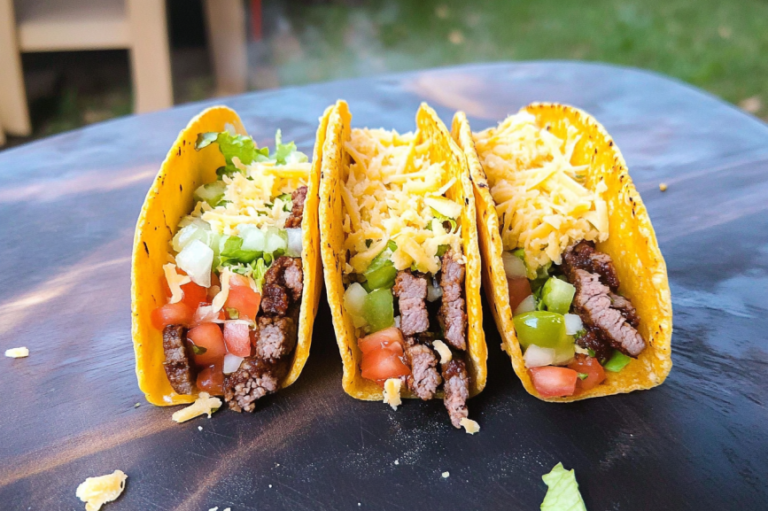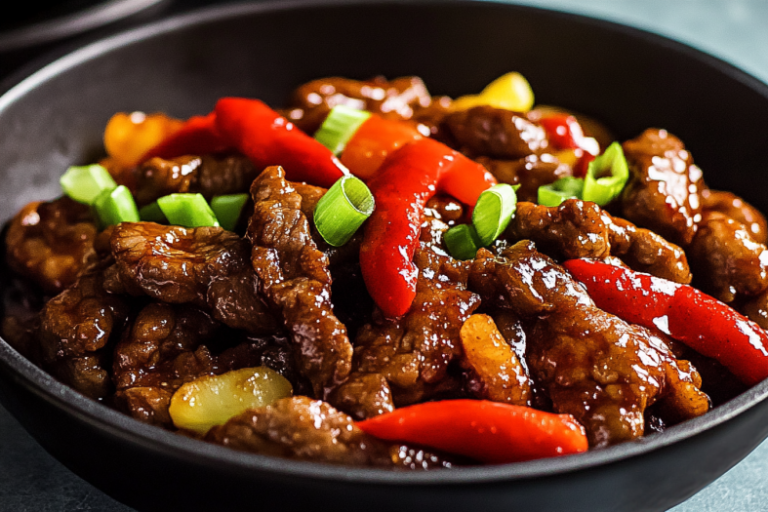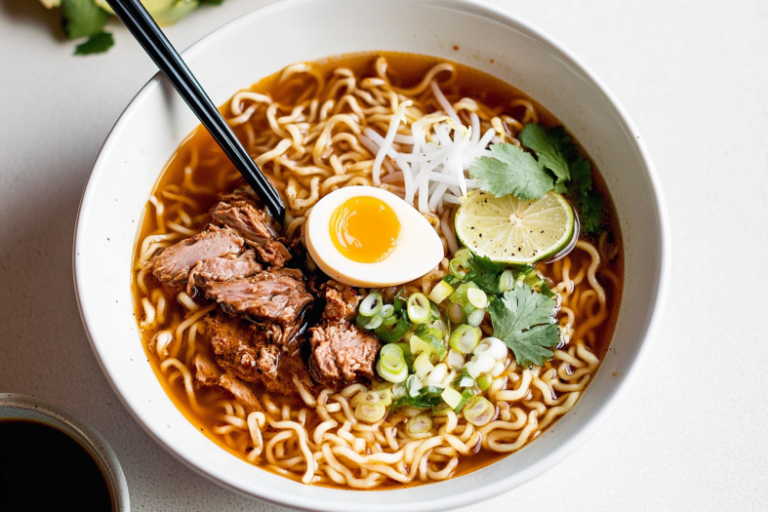Is Mongolian Beef Similar to Beijing Beef?
Every time I walk into my favorite Chinese restaurant, the sizzling aromas of savory beef dishes transport me to a culinary crossroads. Growing up, I always wondered about the subtle differences between Mongolian beef and Beijing beef that dance across my taste buds. These popular Chinese-American cuisine creations have intrigued food lovers across the United States, sparking curiosity about their unique flavor profiles and cultural origins.
When you dive into the world of Chinese cuisine, Mongolian beef and Beijing beef represent more than just delicious meal options. They embody a fascinating fusion of traditional cooking techniques and American adaptation. Understanding the nuanced differences between these beef dishes can transform your dining experience and culinary knowledge.
Key Takeaways
- Mongolian beef and Beijing beef are distinct Chinese-American dishes
- Each dish offers unique flavor profiles and cooking methods
- Cultural fusion plays a significant role in their development
- Ingredients and sauce compositions differ between the two dishes
- Understanding their origins enhances appreciation of Chinese cuisine
Origins and History of Mongolian and Beijing Beef Dishes
Exploring the roots of Mongolian and Beijing beef dishes is a journey through history. It shows how two different regions in China shaped their cuisines. Each region brought its own flavors and cooking ways.
Mongolia’s nomadic lifestyle greatly influenced its food. Herders used robust cooking methods to make meals in harsh climates. They focused on meat dishes for nutrition.
Traditional Nomadic Culinary Roots
Mongolian cuisine used ingredients that were easy to carry and keep. Key items included:
- Mutton and beef as main proteins
- Dairy from animals
- Preserved meats for long trips
Beijing’s Culinary Sophistication
Beijing’s cooking traditions came from imperial kitchens. They showed a refined way of cooking. The city’s food had complex flavors and advanced cooking techniques unlike nomadic food.
Chinese-American Fusion Transformation
The Chinese-American fusion changed these dishes a lot. Restaurants made authentic recipes fit for American tastes. This mix created the Mongolian and Beijing beef we know today.
Key Ingredients Used in Both Dishes
Exploring Mongolian and Beijing beef shows us interesting similarities. Both dishes use special beef cuts to make simple ingredients into amazing meals. The classic Beijing beef typically uses flank, known for its lean texture and ability to soak up flavors.
Vegetables are key in these Chinese-inspired dishes. You’ll find a colorful mix that goes well with the meat:
- Green onions
- Bell peppers
- White onions
- Garlic
Chinese ingredients are the magic behind these dishes’ unique flavors. Soy sauce, hoisin sauce, and oyster sauce are the base seasonings. Mongolian beef adds extra spices for even more taste.
Preparing the meat is an art. Chefs slice the beef thinly for quick cooking and to soak up flavors. Marinating the meat in seasonings makes it tender and full of flavor, making these dishes unforgettable.
Mastering the balance of beef cuts, vegetables, and seasonings is the key to creating an authentic Chinese-American stir-fry experience.

Sauce Composition and Flavor Profiles
Understanding Chinese sauces is crucial for making great beef dishes. Each sauce has its own flavor story, turning simple ingredients into masterpieces.
Chinese sauces blend sweet and savory in a unique way. This makes beef dishes stand out. Exploring Chinese sauces shows the depth of taste in regional cooking.
Mongolian Beef Sauce Elements
Mongolian beef sauce is made from several key ingredients:
- Soy sauce for deep umami flavor
- Brown sugar providing sweetness
- Garlic for aromatic depth
- Ginger adding a subtle heat
The sauce has a perfect sweet and savory balance. This makes Mongolian beef very appealing. Each ingredient is important for the sauce’s complex taste.
Beijing Beef Sauce Components
Beijing beef sauce has a more refined flavor:
- Hoisin sauce for rich sweetness
- Rice vinegar providing tanginess
- Chili peppers for subtle heat
- Sesame oil adding depth
Taste Comparison Analysis
Both sauces follow Chinese cooking principles, but they taste different. Mongolian beef sauce is sweeter. Beijing beef sauce is more balanced and slightly spicier.
Cooking Methods and Techniques
Learning Chinese cooking techniques is key for making Mongolian and Beijing beef. Stir-frying is at the core of these dishes, turning simple ingredients into masterpieces. The secret to great flavor is using high heat and quick wok cooking.
Marinating is also vital for tenderizing the beef and adding flavor. Here’s what you need to do:
- Cut beef into thin, uniform slices
- Prepare a marinade with soy sauce, garlic, and seasonings
- Let meat absorb flavors for 30-45 minutes
- Pat meat dry before cooking
The traditional wok cooking technique needs quick, high-temperature searing. This method locks in juices and makes the outside crispy. Professional chefs say a carbon steel wok is best for even heat and fast cooking.
While both Mongolian and Beijing beef use stir-frying, they have small differences. Beijing beef is often deep-fried first, making it crisper than Mongolian beef.
Pro tip: The secret to perfect stir-frying is maintaining consistently high heat and keeping ingredients moving!
Conclusion: Similarities and Differences Between Mongolian Beef and Beijing Beef
Mongolian Beef and Beijing Beef are interesting examples in Chinese-American cuisine. They show how traditional cooking styles evolve. These beef dishes share some similarities but also have unique flavors and preparation methods.
Both dishes come from American takes on Asian cuisine. But they differ in important ways. Mongolian Beef has thinner slices and a sweeter sauce. Beijing Beef is crisper and has more complex flavors. These differences show how modern cooking techniques adapt Asian dishes.
Learning about these dishes helps us see how cooking traditions change across cultures. The special sauces, cooking methods, and ingredients show chefs’ creativity. Each dish is a story of innovation and the ongoing evolution of cooking.
Whether you like the lighter Mongolian Beef or the richer Beijing Beef, they offer a journey through Chinese-American cuisine. They are more than food; they are symbols of cultural exchange and culinary creativity.
FAQ
What is the main difference between Mongolian Beef and Beijing Beef?
Mongolian Beef has a sweeter sauce with brown sugar and soy sauce. Beijing Beef has a more complex sauce with hoisin and can be spicier.
Are these dishes actually traditional to Mongolia or Beijing?
No, they are not traditional dishes from Mongolia or Beijing. They are American-Chinese restaurant creations, made for Western tastes.
What type of beef is best for these dishes?
Flank steak or sirloin are the best cuts. They are lean, tender, and soak up sauces well during stir-frying.
How spicy are Mongolian and Beijing Beef?
Mongolian Beef is usually less spicy. Beijing Beef can be spicier with chili peppers or red pepper flakes. You can adjust the spice to your liking.
Can these dishes be made vegetarian?
Yes, you can use tofu, seitan, or mushrooms instead of beef. Keep the signature sauce and stir-frying technique for the authentic taste.
What side dishes pair well with Mongolian or Beijing Beef?
Try steamed white rice, brown rice, or vegetable fried rice. Stir-fried veggies like broccoli and bell peppers also pair well.
How long does it typically take to prepare these dishes?
It takes about 20-30 minutes to prepare. This includes marinating and cooking. The quick stir-frying makes it fast.
Are these dishes considered healthy?
They are tasty but can be high in sodium and calories. Use lean beef, reduce sugar, add more veggies, and control portions for a healthier version.






